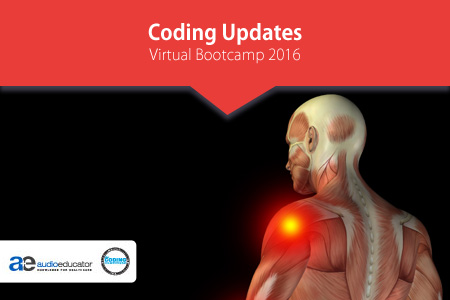A number of new codes as well as guideline revisions are all set to be implemented in 2017. Just like the previous years, several new codes have been created as per the bundling mandates from AMA’s RAW (Relativity Assessment Workgroup) for identifying potentially mis-valued services. New codes will also include the descriptions of the procedures that currently do not have it within the CPT set of codes, including cryoablation of phantom limb pain. Additionally, several category III codes will also be extended, since they are still not ready to be put under category I status.
You will be surprised to know that more than half of 70,000+ ICD-10-CM codes are exclusively meant for orthopedics. These codes can also lead to as much as 35% drop in productivity of a practitioner. Hand surgery and foot and ankle surgery cases can have multiple procedures performed, with the physicians often not wanting to bundle the CPT codes. Reviewing real case studies and Orthopedic Diagnoses Codes under such complex issues can shed more light on this preference of theirs.
Shoulder Anatomy
The shoulder is a region of complex joint that is made of three bones:
- Collarbone (clavicle)
- Shoulder blade (scapula)
- Upper arm bone (humerus)
It is your shoulder joint that is capable of more motion than any other joint in your body. Some of the other structures that exist within your shoulder include:
- Ball and socket: Shoulder joint is also known as Ball and Socket joint, since the head of the upper arm bone goes on to fit into a rounded socket within the shoulder blade. The socket is referred as the glenoid that is covered by articular cartilage, which forms a smooth, frictionless surface that facilitate the bones slide easily across each other. The glenoid is ringed by strong fibrous cartilage called the labrum that forms up a gasket around the socket to add more stability.
- Shoulder capsule: The joint is surrounded by ligaments that form up a capsule to hold the joint together. The capsule is lined by a thin membrane called the synovium, which yields synovial fluid that keeps the shoulder joint lubricated.
- Rotator cuff: The shoulder capsule is bounded by four tendons to help keep your arm bone centered within your shoulder socket. This thick tendon material is called the rotator cuff. The cuff covers the head of the humerus and connects it to your shoulder blade.
- Bursa: In between the bone on top of your shoulder (acromion) and the rotator cuff, there is a lubricating sac known as bursa, which helps the rotator cuff tendons slide smoothly when you try to move your arm.
It is essential to understand the proper Orthopedic Diagnoses Codes before you start treating any issue related to your shoulder, as it can complicate the issue otherwise.
For more on Orthopedic Diagnoses Codes, join Lynn Anderanin, CPC, CPC-I, COSC in a virtual bootcamp session that is focused specifically on Orthopedics and the different aspects of it. By attending this session, you will be able to get an overview of 2017 CPT codes, ICD-10 Documentation, E/M for orthopedics, ankle surgery and much more.




